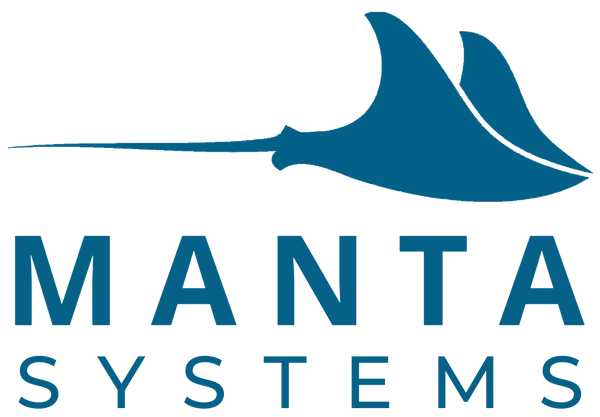
𝐓𝐡𝐞 𝐔𝐥𝐭𝐢𝐦𝐚𝐭𝐞 𝐐𝐮𝐚𝐫𝐚𝐧𝐭𝐢𝐧𝐞 𝐊𝐢𝐭 𝐟𝐨𝐫 𝐒𝐚𝐥𝐭𝐰𝐚𝐭𝐞𝐫 𝐇𝐨𝐛𝐛𝐲𝐢𝐬𝐭𝐬:
𝐌𝐞𝐝𝐢𝐜𝐚𝐭𝐢𝐨𝐧𝐬, 𝐁𝐚𝐭𝐡𝐬, 𝐚𝐧𝐝 𝐄𝐬𝐬𝐞𝐧𝐭𝐢𝐚𝐥 𝐄𝐪𝐮𝐢𝐩𝐦𝐞𝐧𝐭
Introduction
A quarantine tank setup is crucial for saltwater hobbyists to prevent the spread of disease and maintain a healthy aquarium. This guide covers the essential quarantine medications and equipment categorized by budget and experience level: basic, intermediate, and advanced. Each tier builds upon the previous one, ensuring that the intermediate kit includes everything from the basic kit, and the advanced kit includes all items from both the basic and intermediate kits. This structure helps hobbyists grow their quarantine toolkit progressively to address common and complex fish health issues.
This, like most things in saltwater, is based on my opinion and experience. As I have always said, there isn't a right way to do saltwater... but there are several wrong ways. I hope this guides you in deciding what is best for your medicine cabinet. For people that have amazing fish stores near them, they might not need to keep as much medication on hand. However, I recently went looking for Kanaplex and went to 9 local fish stores and none of them had what I needed.
Tamara's Pro Tip: Keep in mind medications do expire so look at dates before you purchase.
Quarantine Kits: Medications by Level
Each kit includes items from the previous tier to ensure comprehensive coverage as your experience and needs grow.
Essential Quarantine Kit ($50 - $100)
The essential kit provides foundational medications for common health concerns, including parasites and mild bacterial infections.
Medications:
- API General Cure: A broad-spectrum anti-parasitic treatment effective against Ich, gill worms, and flukes.
- PraziPro (Praziquantel): Treats flukes and internal parasites, safe for saltwater fish and commonly used as a general dewormer.
- Seachem ParaGuard: A gentle alternative for treating external parasites and minor bacterial infections, suitable as a safer replacement for Melafix.
- Epsom Salt: Used for baths to relieve buoyancy issues and swelling from swim bladder disorders. Dosage for dips: 1 tablespoon per gallon for 15-30 minutes.
- Seachem Prime: Essential for neutralizing ammonia and nitrite in uncycled quarantine tanks, helping to reduce fish stress and prevent toxicity during treatment.
Expanded Quarantine Kit ($150 - $300)
The expanded kit builds on the essential kit, adding medications for broader treatments, such as copper-based and formalin-based medications, and tools for more precise monitoring.
Includes all Essential Kit items plus:
Medications:
- Cupramine (Copper): Highly effective for treating Marine Ich and Velvet. Requires careful dosage and monitoring with a copper test kit.
- Formalin: Used for short-term baths targeting external parasites like Brooklynella. Handle with caution due to its potency.
- Metronidazole: Effective against internal bacterial infections and protozoans like Uronema. Can be administered via medicated food or baths.
- Kanaplex (Kanamycin): A broad-spectrum antibiotic effective for bacterial infections, including secondary infections caused by parasites.
Essential Equipment:
- Copper Test Kit: Required for safely maintaining therapeutic copper levels during Cupramine treatment.
Comprehensive Quarantine Kit ($500+)
For experienced aquarists, the comprehensive kit provides specialized medications and tools to treat a wide range of diseases, including resistant pathogens.
Includes all Essential and Expanded Kit items plus:
Medications:
- Chloroquine Phosphate: A powerful treatment for Marine Velvet, resistant Ich, and some bacterial infections, suitable for fish that may be copper-sensitive.
- Neomycin: An alternative antibiotic for treating severe bacterial infections, especially those that may not respond to kanamycin. Effective against both internal and external bacterial issues.
Quarantine Necessary Equipment by Level
Having the right equipment ensures effective and safe treatment in your quarantine setup. Each tier builds upon the previous, enhancing your ability to monitor and maintain an ideal quarantine environment.
Essential Equipment for Quarantine ($50 - $100)
Includes essential equipment for initial quarantine setups and observation.
- 10-20 Gallon Tank: For isolating and treating small to medium-sized fish.
- Heater: Maintains stable temperature for effective treatments.
- Sponge Filter: Offers gentle filtration without disturbing medications.
- Air Pump and Air Stone: Essential for oxygenation.
- Thermometer: Provides accurate temperature monitoring.
- Bucket for Dips and Water Changes: Used for freshwater dips, medicated baths, and saltwater treatments outside the quarantine tank.
- Ammonia Alert Badge: Continuously monitors ammonia levels to avoid harmful spikes.
Expanded Equipment for Quarantine ($150 - $300)
Includes all Essential Equipment plus additional tools for precise monitoring.
- Copper Test Kit: Required for safe Cupramine treatment.
- Ammonia, Nitrate, and Nitrite Test Kits: Comprehensive test kits help maintain safe water parameters during quarantine and treatment.
- Separate Container for Medications: Avoids cross-contamination with main tank equipment.
Comprehensive Equipment for Quarantine ($500+)
Includes all Essential and Expanded Equipment plus high-end monitoring tools.
- Dissolved Oxygen Meter: Ensures adequate oxygenation during treatment.
- Digital pH Meter: Allows for real-time, accurate pH adjustments.
- Hospital Tank (20+ Gallons): Supports larger fish or delicate species during extensive quarantine.
Quarantine Kit Comparison Chart
| Medication/Equipment | Essential Kit | Expanded Kit | Comprehensive Kit |
|---|---|---|---|
| API General Cure | ✓ | ✓ | ✓ |
| PraziPro | ✓ | ✓ | ✓ |
| Seachem ParaGuard | ✓ | ✓ | ✓ |
| Epsom Salt | ✓ | ✓ | ✓ |
| Seachem Prime | ✓ | ✓ | ✓ |
| Cupramine | ✓ | ✓ | |
| Formalin | ✓ | ✓ | |
| Metronidazole | ✓ | ✓ | |
| Kanaplex (Kanamycin) | ✓ | ✓ | |
| Chloroquine Phosphate | ✓ | ||
| Neomycin | ✓ | ||
| Copper Test Kit | ✓ | ✓ | |
| Ammonia, Nitrate, Nitrite Kits | ✓ | ✓ | |
| Dissolved Oxygen Meter | ✓ | ||
| Digital pH Meter | ✓ |
Common Myths About Quarantine for Saltwater Fish
-
“Healthy-looking fish don’t need quarantine.”
Many diseases have incubation periods, so even apparently healthy fish can carry pathogens. -
“Copper treats all fish diseases.”
Copper is effective for certain parasites, like Ich, but does not treat all diseases and can harm sensitive fish if overdosed. -
“All treatments work the same in freshwater and saltwater.”
Some medications and procedures work differently in saltwater environments; always check compatibility. -
“Ammonia is only a problem in the main tank.”
Uncycled quarantine tanks can experience ammonia spikes, so monitoring is essential even outside the display tank. -
“Dips are enough to treat all external parasites.”
Dips may remove some parasites but are not enough to eliminate established infestations. Comprehensive treatments are often needed.
FAQs
-
How long should I quarantine new fish?
Quarantine for a minimum of 4 weeks, ideally extending to 6 weeks to observe for any delayed symptoms. -
Do I need to cycle my quarantine tank?
Many quarantine tanks are uncycled. Use Prime to detoxify ammonia and perform regular water changes to manage parameters. - Can I quarantine corals in the same tank as fish?
It’s best to have a separate quarantine setup for corals to prevent cross-contamination of fish pathogens. Corals may also require different treatments and water parameters. -
Is freshwater dipping safe for all saltwater fish?
Freshwater dips can be stressful for fish, especially delicate species. They’re most effective as a quick intervention for external parasites but should not replace full quarantine treatments. -
What’s the difference between copper treatments and formalin dips?
Copper treats internal and external parasites over extended exposure, while formalin is a short-term dip for external parasites only. -
How do I know if my fish is stressed in the quarantine tank?
Signs of stress include rapid breathing, loss of color, clamped fins, or lethargy. Monitor water quality and reduce stressors like sudden lighting or excessive movement near the tank. -
How often should I test water parameters in the quarantine tank?
Test ammonia, nitrite, and pH daily, especially in an uncycled quarantine tank. More frequent testing may be necessary when using medications that impact water quality. -
Can I use activated carbon in the quarantine tank?
Avoid using activated carbon during medication treatments, as it will remove most medications from the water. Use it only after treatment to clear residual chemicals. -
How often should I perform water changes in quarantine?
Perform 10-20% water changes every 1-2 days in an uncycled tank to keep parameters stable. Increase frequency if ammonia or nitrite levels spike.
Conclusion
A well-prepared quarantine setup is essential for maintaining the health of your saltwater aquarium. By assembling a quarantine kit tailored to your experience level and gradually expanding it, you can effectively treat a wide range of fish health issues, prevent disease outbreaks, and safeguard your display tank. Whether you’re new to the hobby or an experienced aquarist, the investment in quarantine equipment and medications pays off by reducing stress for your fish and ensuring a healthy, vibrant tank. Diligent quarantine practices and a carefully chosen toolkit empower you to address potential issues proactively, making your journey in saltwater aquaculture both successful and enjoyable.
